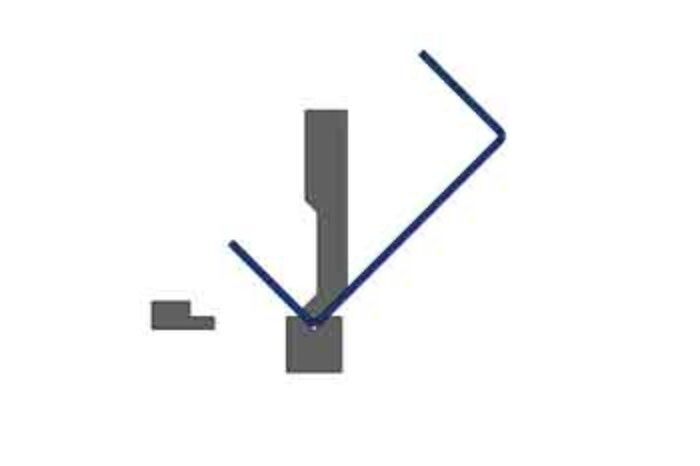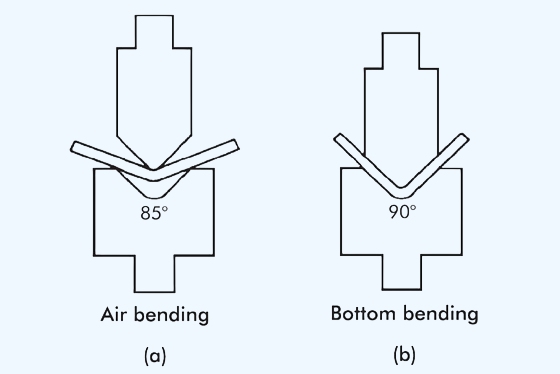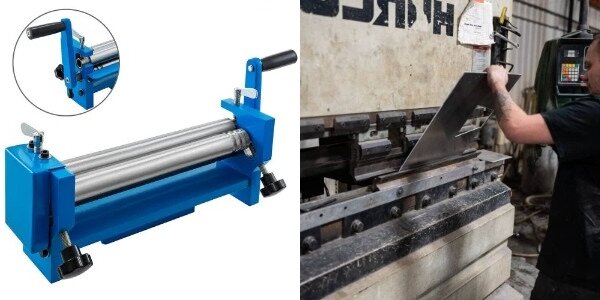Het kiezen van geschikte materialen voor CNC-verspaning kan een uitdaging zijn. Het verkeerde materiaal kan leiden tot hogere kosten, slechte productkwaliteit en productievertragingen. Ik begrijp deze uitdagingen uit eerste hand als iemand die nauw betrokken is bij plaatbewerking. De sleutel tot succes ligt in het kennen van de materiaalopties en hun eigenschappen. Deze kennis helpt om weloverwogen beslissingen te nemen en optimale resultaten te behalen.
Het perfecte materiaal vinden voor uw CNC bewerkingsproject hoeft niet ingewikkeld te zijn. Door de specifieke behoeften van uw project te begrijpen en deze af te stemmen op de eigenschappen van verschillende materialen, kunt u efficiëntie, kwaliteit en kosteneffectiviteit garanderen. Laten we eens kijken naar enkele populaire CNC bewerkingsmaterialen en hun toepassingen.

Metalen gebruikt in CNC-bewerking
Aluminium
Eigenschappen en voordelen
Aluminium is licht en sterk. Aluminium is licht en robuust. Het is veelzijdig omdat het elektriciteit en warmte goed geleidt. Het gemak van anodiseren zorgt voor een betere oppervlaktebescherming en esthetische aantrekkingskracht.
Algemene toepassingen
Aluminium wordt veel gebruikt in de auto-, luchtvaart- en elektronica-industrie. Aluminium is ideaal voor motoronderdelen, vliegtuigstructuren en elektronische behuizingen.
Staal
Staalsoorten: Koolstof, legering en roestvast staal
Staal is verkrijgbaar in vele vormen. Elke vorm heeft zijn eigen unieke kenmerken. Koolstofstaal is robuust en kosteneffectief. Gelegeerd staal is een mengsel van metalen die eigenschappen als sterkte en hardheid verbeteren. Roestvast staal is bestand tegen corrosie en kan worden gebruikt in ruwe omgevingen.
Eigenschappen en voordelen
Staal staat bekend als een duurzaam, sterk en veelzijdig materiaal. Gelegeerd staal presteert beter onder moeilijke omstandigheden. Koolstofstaal is het beste voor toepassingen die een hoge sterkte vereisen. De corrosiebestendige eigenschappen van roestvrij staal maken het tot het ideale materiaal voor toepassingen die een lange levensduur vereisen.
Algemene toepassingen
Staal wordt in veel industrieën gebruikt. Koolstofstaal wordt gebruikt in zware machines en de bouw. Gelegeerd staal wordt gebruikt in industriële apparatuur en auto-onderdelen. Roestvrij staal wordt gebruikt in keukengerei, medische apparatuur en scheepstoepassingen.
Titanium
Eigenschappen en voordelen
Titanium is stevig en licht van gewicht. Het is bestand tegen corrosie en kan hoge temperaturen weerstaan. Hierdoor is het een ideaal materiaal voor extreme omgevingen. Titanium is ook biocompatibel.
Algemene toepassingen
In de lucht- en ruimtevaart wordt titanium gebruikt voor turbineschoepen en vliegtuigframes. Het wordt ook gebruikt in de medische wereld voor chirurgische instrumenten en implantaten.
Koper en messing
Bezittingen en voordelen
Koper staat bekend als geleider van warmte en elektriciteit. Koper is ook antimicrobieel en bestand tegen corrosie. Messing is een legering van koper en zink die goed te bewerken is en er opvallend uitziet.
Algemene toepassingen
Koper wordt veel gebruikt in elektrische onderdelen en warmtewisselaars. Messing wordt gebruikt voor muziekinstrumenten, fittingen en decoratieve voorwerpen.
Kunststoffen gebruikt bij CNC-verspaning
ABS (acrylonitril-butadieenstyreen)
Eigenschappen en voordelen
ABS is een slagvaste, stijve kunststof. Het is een taaie kunststof die tegen een stootje kan. Thermovormen van ABS is eenvoudig en het is verkrijgbaar in verschillende kleuren. Het is licht maar toch sterk en geschikt voor veel toepassingen.
Algemene toepassingen
ABS wordt veel gebruikt in auto-onderdelen, behuizingen voor consumentenelektronica, speelgoed en andere producten. Vanwege de betaalbaarheid en het verwerkingsgemak wordt ABS ook gebruikt voor 3D printen en prototypes.
Polycarbonaat
Eigenschappen en voordelen
De hoge slagvastheid van polycarbonaat en zijn transparantie zijn welbekend. Het is bestand tegen UV-straling en kan temperaturen tot 450 graden weerstaan. Het is licht van gewicht en heeft goede elektrische isolatie-eigenschappen.
Algemene toepassingen
Polycarbonaat wordt gebruikt voor elektronische onderdelen, veiligheidsapparatuur en auto-onderdelen. Dankzij de duurzaamheid en helderheid wordt het gebruikt in optische toepassingen zoals lenzen en transparante panelen.
Nylon
Eigenschappen en voordelen
Nylon is een zeer duurzame, sterke kunststof met een uitstekende slijtvastheid. Het is een robuuste en duurzame kunststof met een lage wrijving. Nylon heeft een hoge thermische stabiliteit en is bestand tegen een breed scala aan chemicaliën. Het kan worden gebruikt voor talloze toepassingen.
Algemene toepassingen
Door zijn hoge sterkte en lage wrijving wordt nylon vaak gebruikt voor bussen, tandwielen en lagers. Je vindt het ook in consumentenproducten zoals textiel, sportuitrusting en industriële machines.
POM (polyoxymethyleenacetaal of polyoxymethyleen)
Eigenschappen en voordelen
POM (acetaal) is een wrijvingsarme kunststof met hoge sterkte en een uitstekende maatvastheid. Het is ideaal voor precisieonderdelen omdat het goed bestand is tegen chemische stoffen en bovendien gemakkelijk te bewerken is. POM staat ook bekend om zijn lage vochtopname, hoge stijfheid en goede chemische weerstand.
Algemene toepassingen
POM wordt vaak gebruikt voor precisieonderdelen zoals tandwielen, lagers en bevestigingsmiddelen. Het wordt ook gebruikt in consumentenproducten zoals ritsen, keukengerei en elektrische isolatoren. De eigenschappen maken dit materiaal geschikt voor nauwkeurige en duurzame toepassingen.

Composieten en andere materialen
Koolstofvezelversterkte polymeren
Bezittingen en voordelen
CFRP staat bekend om zijn uitstekende verhouding tussen sterkte en gewicht. Het is ongelooflijk stijf en licht, met een uitstekende weerstand tegen vermoeiing. CFRP is ook een goede geleider van warmte en elektriciteit.
Algemene toepassingen
CFRP wordt veel gebruikt in de lucht- en ruimtevaart en de auto-industrie om structurele onderdelen te maken met een hoge sterkte en een laag gewicht. Het wordt ook gebruikt in sportuitrusting zoals tennisrackets en fietsen.
Glasvezel
Bezittingen en voordelen
Glasvezel is gemaakt van glasvezels, hars en andere materialen. Het is flexibel, sterk en bestand tegen vocht en corrosie. Glasvezel is licht, voordelig en relatief sterk. Het is een goede keuze voor verschillende toepassingen.
Algemene toepassingen
Glasvezel wordt gebruikt voor de bouw van boten, autocarrosserieën en tanks voor opslag. Glasvezel wordt ook gebruikt voor bouwmaterialen zoals dakbedekking, wandbekleding en sportuitrusting zoals surfplanken en skiën.
Keramiek
Bezittingen en voordelen
Keramiek is een bros, stijf materiaal met een hoge hittebestendigheid en slijtvastheid. Keramiek is bestand tegen extreme temperaturen en is elektrisch isolerend. Daarom zijn ze geschikt voor specifieke technische toepassingen.
Algemene toepassingen
Keramiek kan worden gebruikt voor toepassingen die een hoge thermische stabiliteit en slijtvastheid vereisen, zoals onderdelen voor de ruimtevaart, industriële machines en medische apparatuur. Keramiek wordt ook gebruikt in elektronische producten zoals substraten, isolatoren en consumptiegoederen zoals keukengerei en bestek.
Snel bekijken: CNC materiaaltabel voor machinale bewerking
Deze tabel beschrijft de meest voorkomende materialen die worden gebruikt voor CNC-bewerking.
| Type materiaal | Naam | Rang |
|---|---|---|
| Metaal | Aluminium | Al 1050 |
| Metaal | Aluminium 1050 | Al 1050 |
| Metaal | Aluminium 1060 | Al 1060 |
| Metaal | Aluminium 2024 | Al 2024 |
| Metaal | Aluminium 5052-H11 | Al 5052-H11 |
| Metaal | Aluminium 5083 | Al 5083 |
| Metaal | Aluminium 6061 | Al 6061 |
| Metaal | Aluminium 6082 | Al 6082 |
| Metaal | Aluminium 7075 | Al 7075 |
| Metaal | Aluminium-brons | Al + Br |
| Metaal | Aluminium-MIC-6 | Al MIC-6 |
| Metaal | Aluminium-QC-10 | Al QC-10 |
| Metaal | Messing | Cu + Zn |
| Metaal | Koper | Cu |
| Metaal | Koper-beryllium | Cu + Be |
| Metaal | Koper-chroom | Cu + Cr |
| Metaal | Koper-wolfraam | Cu + W |
| Metaal | Fosforbrons | Cu + Sn + P |
| Metaal | Roestvrij staal 303 | SS 303 |
| Metaal | Roestvrij staal 304 | SS 304 |
| Metaal | Roestvrij staal 316 | SS 316 |
| Metaal | Roestvrij staal 410 | SS 410 |
| Metaal | Roestvrij staal 431 | SS 431 |
| Metaal | Roestvrij staal 440 | SS 440 |
| Metaal | Roestvrij staal 630 | SS 630 |
| Metaal | Laag Koolstofstaal | 1018 Staal |
| Metaal | Middelgroot koolstofstaal | 4130 staal |
| Metaal | Middelgroot koolstofstaal | 4140 staal |
| Metaal | Staal met hoog koolstofgehalte | 1095 verenstaal |
| Kunststof | ABS | ABS, ABS- hoge temperatuur, ABS- antistatisch |
| Kunststof | ABS + PC | ABS + PC |
| Kunststof | HDPE | HDPE, PEHD |
| Kunststof | Nylon 6 | PA6 |
| Kunststof | Nylon 6 + 30% Glasvulling | PA6 + 30% GF |
| Kunststof | Nylon 6-6 polyamide | PA66 |
| Kunststof | Polycarbonaat | PC |
| Kunststof | Polycarbonaat-glasvulling | PC + GF |
| Kunststof | Polycarbonaat+30% Glasvulling | PC + 30% GF |
| Kunststof | Polyetheretherketon | PEEK |
| Kunststof | Polyetherimide | PEI |
| Kunststof | Polyetherimide + 30% Glasvulling | Ultem 1000 + 30% GF |
| Kunststof | Polyetherimide + Ultem 1000 | PEI + Ultem 1000 |
| Kunststof | Polyethyleen | PE |
| Kunststof | PET | PET |
| Kunststof | PMMA-Acryl | PMMA-Acryl |
| Kunststof | POM | POM |
| Kunststof | PPS | PPS |
| Kunststof | PPS + Glasvulling | PPS + GF |
| Samengesteld | PTFE | PTFE |
Factoren die de materiaalkeuze voor CNC-bewerking beïnvloeden
Mechanische eigenschappen
Je lichaam versterken
Bij het selecteren van materialen voor CNC snijden is sterkte van cruciaal belang. Dit bepaalt de maximale belasting die een materiaal kan weerstaan voordat het vervormt.
Hardheid
De hardheid van een materiaal wordt gemeten aan de hand van de weerstand tegen oppervlaktevervorming. Hoe complexer het materiaal, hoe beter het bestand is tegen slijtage. Dit maakt ze ideaal voor wrijvings- en schurende toepassingen.
Vervormbaarheid
Het vermogen om een materiaal plastisch te vervormen zonder het te breken wordt elasticiteit genoemd. Materialen met een hoge elasticiteit kunnen een aanzienlijke vervorming verdragen.
Thermische eigenschappen
Hittebestendigheid
Hittebestendigheid meet het vermogen van een materiaal om hoge temperaturen te weerstaan zonder eigenschappen te verliezen. Dit is essentieel voor onderdelen die worden blootgesteld aan hoge temperaturen, zoals motoronderdelen of industriële machines.
Thermische uitzetting
De thermische uitzetting van een materiaal is de snelheid waarmee het uitzet bij verwarming. Materialen met een lage thermische uitzetting hebben de voorkeur in omgevingen met temperatuurschommelingen omdat ze maatvast blijven.
Elektrisch eigendom
Geleidbaarheid
Elektrische geleidbaarheid is een maat voor het vermogen van een materiaal om elektriciteit te geleiden. Elektrische onderdelen en bedrading worden gemaakt van materialen met een hoog geleidingsvermogen, zoals koper en aluminium.
Isolatie
Isolatiematerialen zijn essentieel om elektronische componenten te beschermen en de veiligheid te garanderen. Deze materialen worden gebruikt voor isolatoren, behuizingen en andere elektrische isolatietoepassingen.
Chemische weerstand
Corrosiebestendigheid
Corrosiebestendigheid is het vermogen om reacties zoals elektrochemische of chemische reacties te weerstaan. Deze eigenschap is essentieel voor componenten die worden blootgesteld aan ruwe omgevingen, zoals chemische verwerking of scheepvaarttoepassingen.
Chemische stabiliteit
Chemische stabiliteit is het vermogen van een materiaal om chemische reacties te weerstaan. Chemisch stabiele materialen zijn nodig voor toepassingen waarbij blootstelling aan agressieve chemicaliën en oplosmiddelen een rol speelt.
Kostenoverwegingen
De materiaalkosten zijn een essentiële factor bij de keuze van het geschikte materiaal. Voor de haalbaarheid van een project is het belangrijk om een evenwicht te vinden tussen prestaties en budgetbeperkingen. Hoogperformante materialen bieden superieure eigenschappen maar zijn vaak duurder. Het is essentieel om de kosten-batenverhouding te evalueren alvorens een beslissing te nemen.
Uitdagingen en oplossingen voor CNC-verspanend materiaal
Bewerkbaarheid
Metalen
Uitdaging:. Metalen zoals staal, titanium en aluminium zijn in verschillende mate bewerkbaar, wat van invloed is op de slijtage van gereedschap en afwerking.
Oplossing:
- Gebruik voor hardere metalen hardmetalen of keramische gereedschappen.
- Optimaliseer de snijsnelheid en voeding voor elke metaalsoort.
- Gebruik koelmiddelen die geschikt zijn om de hitte te verminderen en de bewerkbaarheid te verbeteren.
Kunststoffen
Uitdaging:. Warmteopbouw kan ervoor zorgen dat kunststoffen smelten, vervormen of slecht afwerken.
Oplossing:
- Voor zuivere sneden gebruik je gereedschap van snel staal of hardmetaal.
- Blijf snijden op hoge snelheden en zorg voor goede koeling om smelten te voorkomen.
- Slijp je gereedschap om hitte en vervorming te verminderen.
Afwerking oppervlak
Uitdaging: Het bereiken van gladde oppervlakken kan een uitdaging zijn door materiaaleigenschappen, gereedschapsslijtage en onjuiste bewerkingsparameters.
Oplossing:
- Gebruik schuurmiddelen met fijne korrel of polijstmiddelen na het bewerken van metalen.
- Zorg ervoor dat het gereedschap dat je gebruikt scherp is en geschikt voor het materiaal dat wordt bewerkt.
- Bewerkingsparameters zoals snelheid, voeding en snijdiepte aanpassen om de oppervlakteafwerking te optimaliseren.
- Koelmiddelen kunnen worden gebruikt om de hitte te verminderen en te voorkomen dat het materiaal aan het gereedschap blijft kleven. Dit kan de afwerking schaden.
Levensduur en slijtage van gereedschap
Uitdaging:. Gereedschapsslijtage is een belangrijk probleem bij CNC-verspaning, dat de precisie, oppervlakteafwerking en productiviteit beïnvloedt.
Oplossing:
- Er moeten hoogwaardige materialen worden gebruikt die bestand zijn tegen slijtage, zoals keramische, hardmetalen of met diamant beklede gereedschappen.
- Gebruik het juiste koelsysteem om gereedschapsslijtage te verminderen en hitte te beheersen.
- Vervang en inspecteer je gereedschap regelmatig om ervoor te zorgen dat het in goede staat blijft.
- Vermijd te agressieve instellingen die de slijtage van het gereedschap versnellen.
- Pas de freesbaan aan het slijtagepatroon van de verschillende materialen aan.
Conclusie
Het selecteren van geschikte CNC materiaal voor machinale bewerking bepaalt het succes van uw project. U kunt de duurzaamheid en kwaliteit van uw product verbeteren door de projectvereisten zorgvuldig te evalueren en de materiaaleigenschappen te begrijpen.
Heb je een betrouwbare fabrikant van plaatwerkonderdelen nodig? Dan bent u bij Shengen aan het juiste adres. Wij zijn gespecialiseerd in lasersnijden, buigen, oppervlakte-afwerking en CNC-verspaning van plaatmetaal. Neem contact op met Shengen Vandaag nog en zoek hulp bij professionals!
FAQs
Wat is het beste materiaal voor mijn CNC project en hoe selecteer ik het?
Houd bij het kiezen van het materiaal rekening met de mechanische, elektrische, chemische en thermische vereisten van je project. Overweeg de gewenste oppervlakteafwerking en weeg deze af tegen de kosten en beschikbaarheid. Raadpleeg CNC-experts om je te helpen de juiste keuze te maken.
Wat zijn de voordelen van het gebruik van kunststoffen of metalen voor CNC-bewerking?
Metalen zijn licht, corrosiebestendig en veelzijdig, waardoor ze geschikt zijn voor gewichtsgevoelige toepassingen. Kunststoffen zijn licht en corrosiebestendig. Ze zijn ook veelzijdig en geschikt voor toepassingen die een laag gewicht en ruwe omgevingen vereisen.
Wat is de invloed van materiaalselectie op CNC-bewerkingskosten?
De grondstofprijs, bewerkingstijd en gereedschapsslijtage beïnvloeden de materiaalkosten. Materialen met een uitstekende bewerkbaarheid zijn goedkoper, maar metalen zoals titanium kunnen duurder zijn.
Wat zijn de nieuwste materialen die tegenwoordig worden gebruikt bij CNC-bewerking?
Deze materialen omvatten composieten, zoals CFRP, hoogwaardige kunststoffen, zoals PEEK of PEI, en metaallegeringen. Deze materialen bieden verbeterde sterkte en chemische en thermische stabiliteit voor gespecialiseerde toepassingen.
Meer bronnen:
Soorten metalen voor CNC-bewerking - Bron: Xometry
Oppervlakteafwerking bij CNC-verspaning - Bron: HUBS
Hey, ik ben Kevin Lee

De afgelopen 10 jaar heb ik me verdiept in verschillende vormen van plaatbewerking en ik deel hier de coole inzichten die ik heb opgedaan in verschillende werkplaatsen.
Neem contact op

Kevin Lee
Ik heb meer dan tien jaar professionele ervaring in plaatbewerking, gespecialiseerd in lasersnijden, buigen, lassen en oppervlaktebehandelingstechnieken. Als technisch directeur bij Shengen zet ik me in om complexe productie-uitdagingen op te lossen en innovatie en kwaliteit in elk project te stimuleren.




